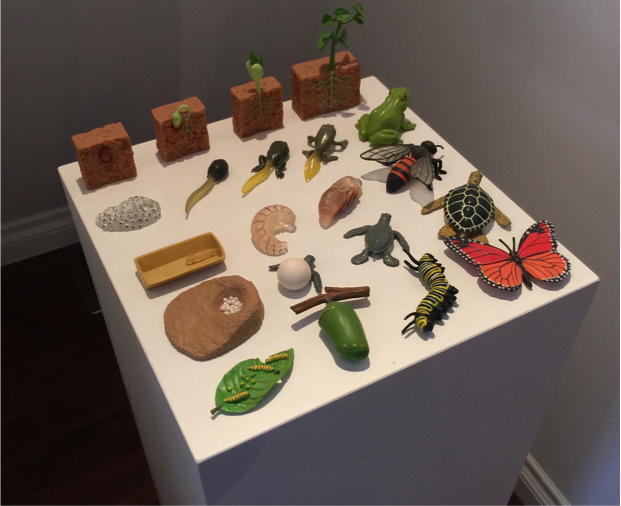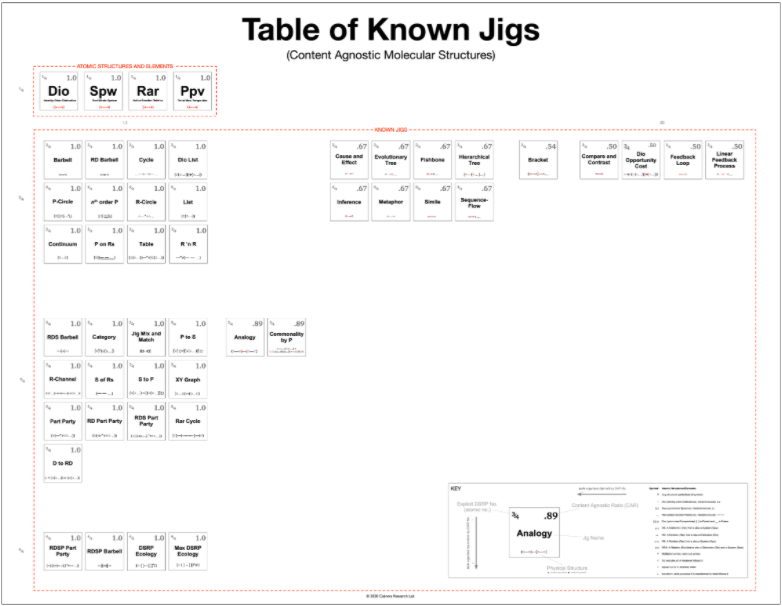Systems thinking = seeing invisible structure
Today I am writing about systems thinking, and how it can be equated with looking beyond the surface to see invisible structure.
My library is chock full of books and physical models and examples of systems thinking and the systems sciences. A few examples include: museum quality replica skulls from each of the early hominids; models of the human eye, hand, ear, torso, skeleton, and brain; historical scientific models of atoms, Watson and Crick's double helix; Darwin's evolution; the planetary models of Ptolemy, Copernicus, and Kepler; Da Vinci's models and inventions; and models of sign language and the Platonic solids. It's a wonderful room where one can be surrounded by systems of many kinds. It's an inspiring room where I write, entertain visitors, and debate with visitors from around the world and across the disciplines of human knowledge.
Under accent lighting, some of my favorite models are positioned atop four museum quality pedestals. But on one particular pedestal sit items you'd find in the kid's section of a museum store rather than in the museum itself. The total cost for these items (~US$5) is far less than the cost of the pedestal they sit on. They are plastic children's toys that show the development of a plant, a frog, a fly, a turtle, and a butterfly. These items are not antique. They were made in China. They came in a plastic bag.
So what about these kitschy, plastic toys deserves such exclusive placement? It's true that development is an incredibly important interdisciplinary concept. Not only to biologists and in evolution but to the psychologist, the sociologist, and the human ecologist. But that's not why.
The question is how did we get to the concept of development. What made it possible to even think it in the first place? I mean, a plant is not a frog is not a fly is not a turtle and is surely not a butterfly. And if we look at their individual stages, none of them show any similarities whatsoever. So why even put these different lineages on the same stand? What makes them similar when superficially we see nothing but difference?
The answer is underlying structure.
It is the underlying and mostly invisible structure that makes us see the pattern that connects them. It is only when we see this structure that we appreciate how much these different lineages have in common: the cycle of development. We don't see the interrelationships and analogous stages for each step in the cycle, we make those in our minds as generalizations. Making the invisible structure visible is the key. Structure is the hero of this story worthy of its own pedestal.
Mental Models = Information and Structure
Every mental model or concept is made up of two things--information and structure--much like every sentence has words (information) and structure (grammar). Information alone does not contain meaning. Only when information is structured does it take on meaning. Meaning making, our greatest strength among the mammals, requires information and structure. Yet like the cycle of development, this structure is all but hidden from our view. We have to look for it in order to see it. And we have to know what we are looking for in order to look for it.
That is, at an essential level, what systems thinking is all about: seeing the invisible structure that provides new meaning and new perspectives. Systems thinking is agnostic to the content of inquiry. It makes no difference what kind of system you are interested in figuring out, you can use systems thinking to understand it. There are four invisible structures, DSRP, that are mixed and matched together (something akin to DNA) underlying all systems thinking. Knowing these structures will help you to know what to look for and even where to look. They help us to make predictions and build better mental models. Most of all, they help us look beyond superficial details to see what's happening underneath.
.png?width=150&height=150&name=CRL%20GOAT%20Logo%20(4).png)


